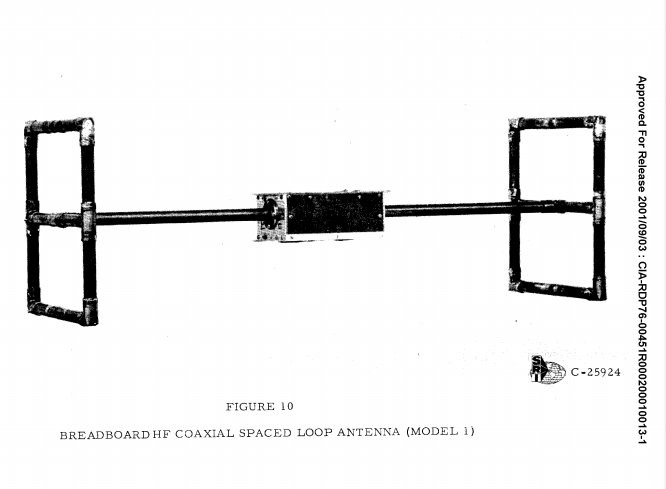Many thanks to SWLing Post contributor, Grayhat, who shares the following:
I stumbled upon a document I found in the “CIA reading room”:
https://www.cia.gov/library/readingroom/docs/CIA-RDP76-00451R000200010013-1.pdf
In short, the document, titled “HF SPACED LOOP ANTENNA” and dating back to 1967, describes the design of a “direction finding” antenna used to find an HF transmitter. The document describes a number of setups tried during initial experimentation and then explains the reasons for the selection of what’s called a “Coaxial spaced loop in vertical opposition”, basically two vertical loops connected in anti-phase; the document describes in detail the loop and some circuitry used with it, but the most interesting section is the one which deals with radiation lobes. if you look at that you’ll suddenly realize using such a configuration, the resulting antenna acts as a huge dipole with extremely deep nulls !!
Fascinating! Thank you, Grayhat.
And, honestly, there’s enough material in that CIA document to please the most demanding of antenna nerds! Most impressive. I’m curious if anyone has ever built one of these. If so, please comment with your experience!


The Radio Security Service (MI6) started using spaced loop DF in 1940/41 and mobile versions were sent into Europe with the Normandy invasion in June 1944. They were lucky to have the man who “wrote the book” on DF, Roland Keen. The operators found them difficult to use compared to the U Adcock systems.
I worked at Southwest Research Institute in San Antonio in the late 70’s. We built spaced loop DF antennas mostly for the US Navy and other DOD organizations. Surprising thing was the depth of the nulls and *very* wide band operation. If you take a pair of the spaced loop assemblies as shown and cross them at 90 degrees, throw in some signal processing, and you can get a very accurate DF system. It helps to know a lot of trigonometry, too.
This was invented during WW2 by the Nazis.
I’ve added a link.
https://en.m.wikipedia.org/wiki/Funkabwehr
Looks like a “ZL Special” antenna
Well, the idea is similar, but then I believe that using two loops in place of two dipoles makes quite some difference when it comes to the radiation pattern (and nulls), it may be a nice experiment, I think
Looking at the list of station/frequencies used for the antenna tests and found here
https://www.cia.gov/library/readingroom/docs/CIA-RDP76-00451R000200010013-1.pdf#page=96
it sounds like the loop worked fine from 4Mhz to 15Mhz, now given the range, I wonder if a similar “twin loop in opposition” config may be useful as a shortwave reception antenna
Yes Andrew, look up Bowtie Antenna on any of the antenna sites.